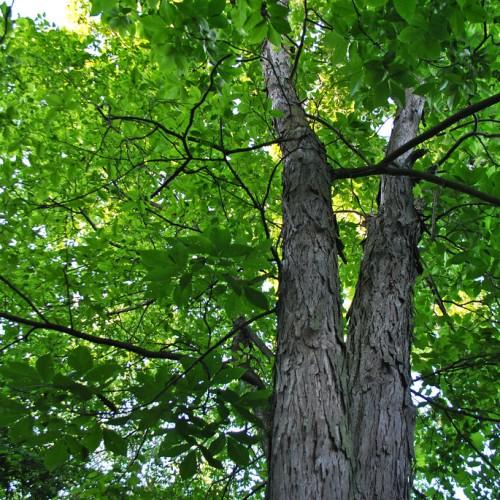
shagbark hickory
Carya ovata
Also Known As - Upland Hickory,Scalybark Hickory,Scalybark HickoryCycle:
Perennial
Watering:
Average
Hardiness Zone:
4 - 8
Flowers:
Flowers
Sun:
full sun
Soil:
Sandy Loamy Clay
Cones:
Yes
Edible:
Yes
Leaf:
Yes
Growth Rate:
High
Maintenance:
Low
Drought Tolerant:
Yes
Thorny:
Yes
Care Level:
Medium
watering
Shagbark hickory trees should be watered deeply but infrequently, providing about 1 to 1.5 inches of water once a week during active growing seasons. They are relatively drought tolerant and do not require frequent watering. During the hot summer months, the trees should be watered a little more often, preferably in the morning when the light of the day is still low. During winter months, the need for additional watering diminishes. In fact, the trees will appreciate being left to dry out during winter months and should receive no additional watering.
sunlight
Shagbark Hickory (Carya ovata) do well when planted in an area with direct sunlight for a minimum of 6 to 8 hours a day. They prefer full sun locations but can also tolerate some afternoon shade. The ideal location for a shagbark hickory tree is 1 that gets the morning and midday sun, and is protected from the intense afternoon sun. This tree is fairly hardy and can tolerate a range of climates and light exposure. In northern climates with long summer days, they can thrive in full sun during summer months. In cooler climates with shorter summer days, they can naturally receive 4 to 5 hours of direct sunlight in order to survive.
pruning
Shagbark hickory trees need little to no pruning. Pruning is recommended for this species only if you wish to shape or reduce its height. If needed, prune in late summer or early fall after new growth has occurred. Make sure that limbs are pruned in a way that preserves the upright, conical shape that is typical of this species. Be sure to remove branches that cross or rub against each other, as well as those that compete for space. Remove dead or damaged branches at any time of year if desired.
